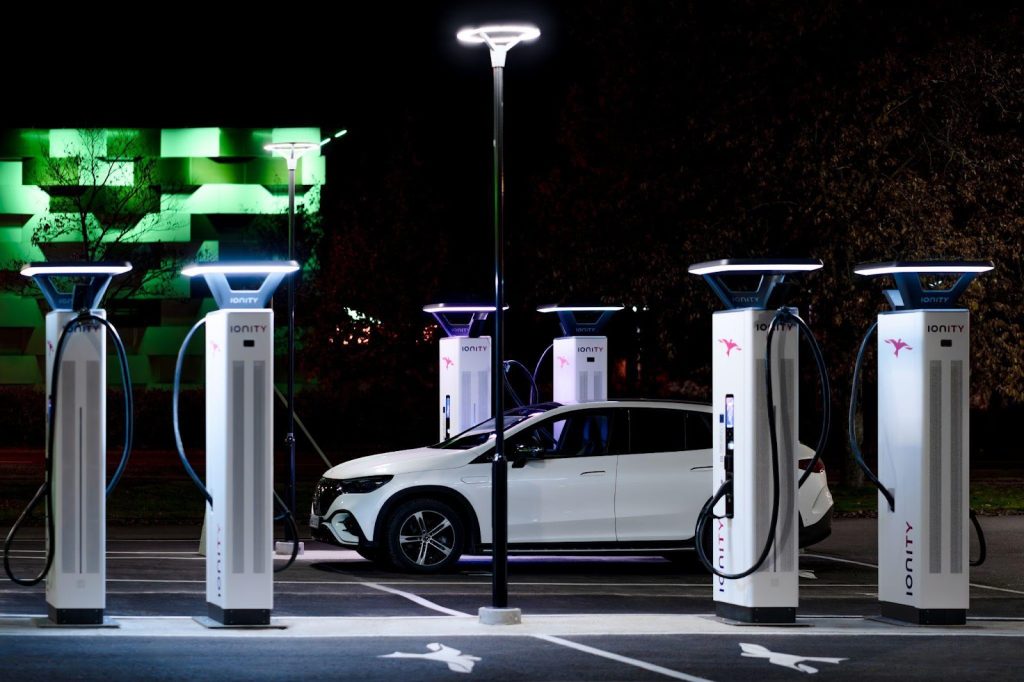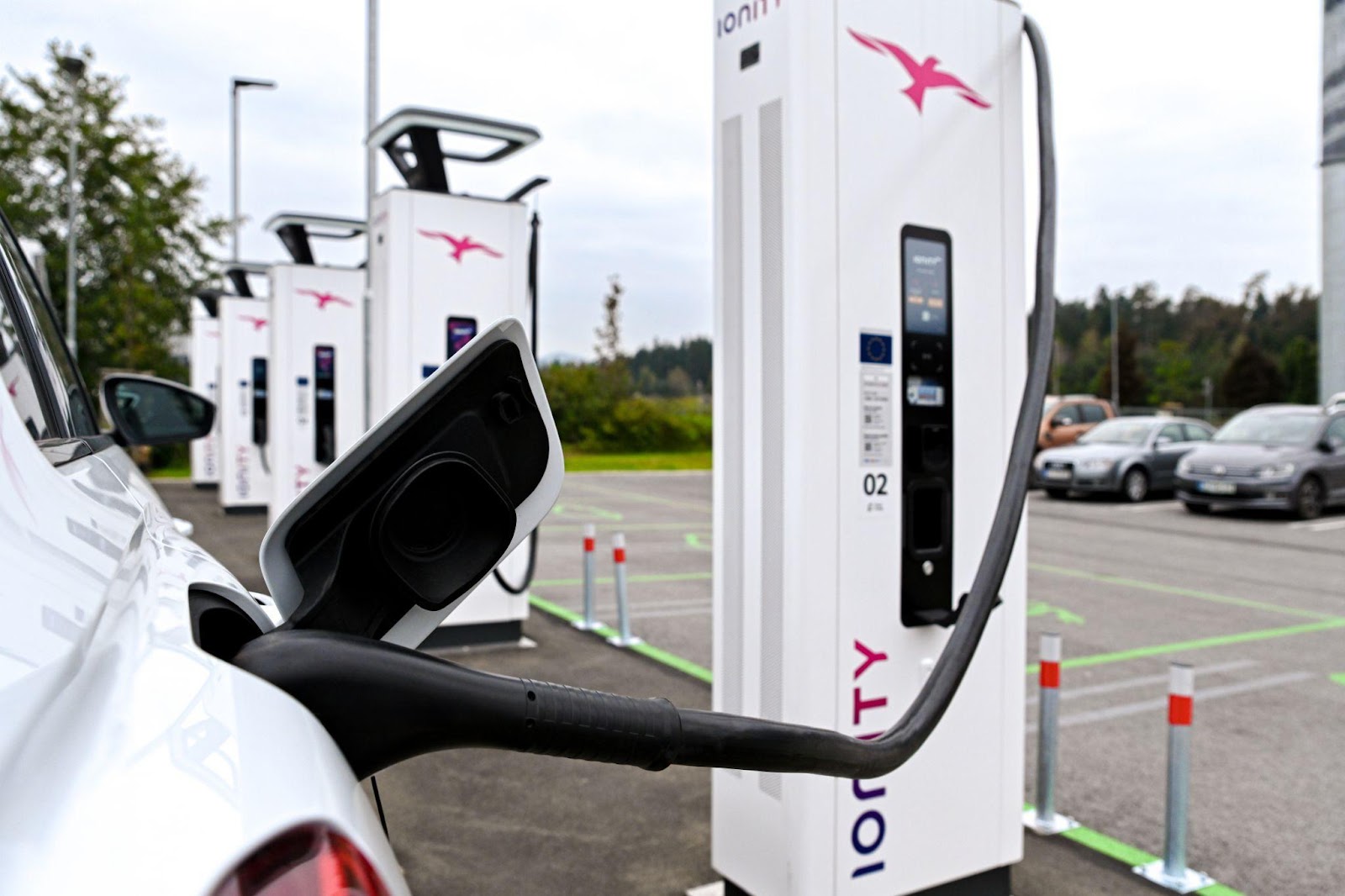Remember when electric vehicles were a rare sight on roads? Those days are rapidly fading into the rearview mirror — and with them, the question of charging infrastructure has moved front and center.
As businesses and organizations wrestle with the complexities of installing EV charging stations, they're discovering a surprisingly robust network of funding sources and financial backing.
Just in December 2024, the number of charging devices in the UK increased by 1105. This growth is part of a broader European expansion, with Netherlands (144,453), Germany (120,625), France (119,255), Belgium (44,363), and Italy (41,114) leading the EU in total public charging points. In a moment, you'll learn who covers the costs and how to maximize the available support for EVs.
Government Support and Tax Credits Across Europe
Several European countries have established comprehensive frameworks of financial incentives and tax credits to drive the adoption of EV charging infrastructure. Here's how the support varies across key markets:
United Kingdom: First-Year Allowance for Charging Equipment
The 100% first-year allowance allows organizations to deduct the full cost of charging equipment from their taxable profits in the initial year of investment.
This significant tax benefit has transformed the financial calculations for many businesses considering EV charging installations, making the investment considerably more attractive.
It's worth noting that it's been recently extended and applies until:
- 31 March 2026 for Corporation Tax purposes
- 5 April 2026 for Income Tax purposes
Germany: Lump-Sum Taxation for Charging Devices
The tax treatment of charging devices in Germany was newly regulated by the Federal Ministry of Finance decree of September 29, 2020. These regulations aim to promote the private use of charging infrastructure:
- Option for lump-sum taxation at 25% for discounted or free transfer of ownership
- Also applies to subsidies for the purchase of private charging facilities
- Limited until December 31, 2030
- Additional solidarity surcharge and, if applicable, church tax
This tax incentive makes it significantly more attractive for employers to provide charging infrastructure to employees, supporting Germany's ambitious electrification goals.
Sweden: Charge the Car Grant
Sweden offers one of the most generous support schemes in Northern Europe with its Charge the Car grant. The program provides substantial financial backing for EV charging infrastructure:
- Covers up to 50% of the cost of EVSE materials
- Maximum grant per charge point of 10,000 SEK (€1,000) for individuals
- Increased maximum of 15,000 SEK (€1,500) for companies, municipalities, councils, and foundations
This progressive approach has helped Sweden achieve one of the highest EV adoption rates in Europe, with charging infrastructure growing in parallel with the vehicle fleet.
Private Business Charging Station Investment Models

While government incentives create a strong foundation, successful EV charging operations require thoughtful business strategies.
Retail locations have discovered that charging stations can serve as powerful customer attraction tools, with studies showing that EV drivers often prioritize businesses that provide charging facilities.
Property developers, meanwhile, are integrating charging infrastructure into both new developments and existing properties, recognizing its potential to enhance property values while generating steady revenue streams.
Commercial Property Considerations
The integration of EV charging infrastructure into commercial properties presents unique opportunities. Unlike traditional amenities, charging stations can serve multiple purposes: attracting tenants, generating direct revenue, and increasing property value.
Property developers are finding that early investment in electric vehicle infrastructure can provide a competitive edge, particularly in areas with growing EV adoption rates. The key is strategic placement and careful capacity planning to maximize both utility and return on investment.
Retail and Hospitality Sector
For retail and hospitality businesses, commercial charging stations are becoming strategic assets. Grocery stores have found particular success, as charging times align with typical shopping patterns.
At the same time, hotels and restaurants are discovering that public charging stations can extend customer dwell time, leading to increased spending.
The model works particularly well when businesses view charging stations not just as revenue generators but as tools for customer engagement and loyalty building.
Pricing and Revenue Models of EV Charging Stations
When it comes to pricing strategies, successful EV charging operations typically extend beyond simple per-kWh charging fees. The most effective approaches combine various pricing elements while considering both operational costs and market dynamics.
For a detailed exploration of different charging business models and pricing strategies for public charging infrastructure, we recommend reading our comprehensive guide "EV Charging Station Business Models: What Works."
Conclusion
While initial costs may seem daunting, the combination of tax benefits, grants, and emerging business models creates compelling opportunities for organizations ready to participate in the EV charging revolution. The key to success lies in understanding available support mechanisms, carefully planning implementation, and thinking strategically about long-term operational models.
For organizations considering investment in EV charging infrastructure, the current moment offers a unique opportunity. With government support and growing market demand, the question is increasingly not whether to invest but how to maximize the benefits of doing so.
Ready to navigate the funding landscape and build a future-proof charging infrastructure? Connect with our experts to learn how we can help you leverage available incentives and create a tailored charging solution that meets your needs.
